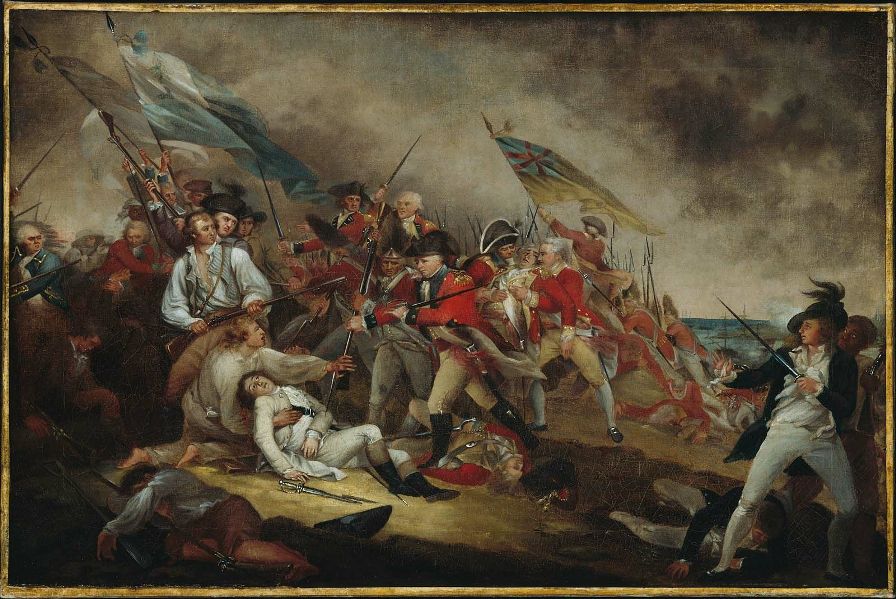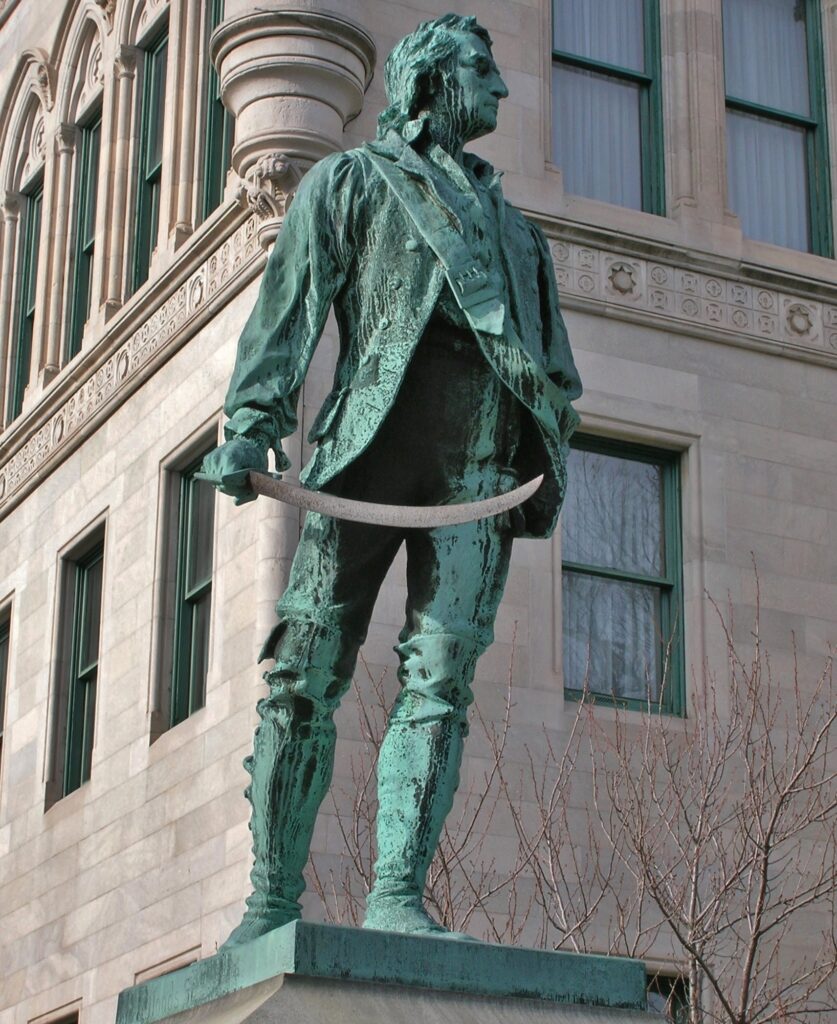Thomas Knowlton is arguably Ashford’s most widely recognized war hero. His service during the Seven Years’ War and the American Revolution are memorialized in a statue on the grounds of the State Capitol and in the dedication of Knowlton Memorial Hall in Ashford.
Knowlton first saw military action when he enlisted as a private in Colonel Phineas Lyman’s Connecticut provincial regiment in 1757 during the Seven Years’ War (also known as the French and Indian War). He fought in numerous important battles during the war, including the Battle of Fort Ticonderoga in 1758. His service culminated with the siege of Havana in 1762, by which time he had risen to the rank of second lieutenant.
A New Call to Duty
After the war, Knowlton served as an Ashford selectman, until he heard about the outbreak of hostilities at Lexington and Concord. As a militia captain at Ashford, he led a company of 78 men to help surround the British in Boston. The General Assembly appointed Knowlton captain of the fifth company of Israel Putnam‘s Third Connecticut Regiment and he and his men poured a withering fire on British troops advancing on a strategic rail fence during the Battle of Bunker Hill.

The Death of General Warren at the Battle of Bunker’s Hill, June 17, 1775. Knowlton is shown in the white shirt holding a musket – John Trumbull ca. 1815-1831, Boston Museum of Fine Arts. Used through Public Domain.
On January 1, 1776, Knowlton received a promotion to major of the Twentieth Continental Regiment of the Continental army. Shortly after, he marched his regiment to New York City to assist General George Washington in the defense of the city. Now a lieutenant colonel, Knowlton led a group of light infantry fighters known as Knowlton’s Rangers. These men undertook the dangerous task of obtaining intelligence information for the Continental army. Included among Knowlton’s troops was the soon-to-be-famous patriot Nathan Hale.
On September 16, 1776, at Harlem Heights, Knowlton’s men undertook a reconnaissance mission that brought them into direct contact with the British army. Knowlton engaged the British in battle in an effort to prevent them from pursuing the fleeing Continental army up Manhattan Island. Knowlton’s men suffered heavy casualties, including Knowlton himself, whose life was ended by a fatal shot to the back. In his General Orders the next day, Washington paid tribute to “the gallant and brave Colonel Knowlton, who would have been an honor to any country.”









